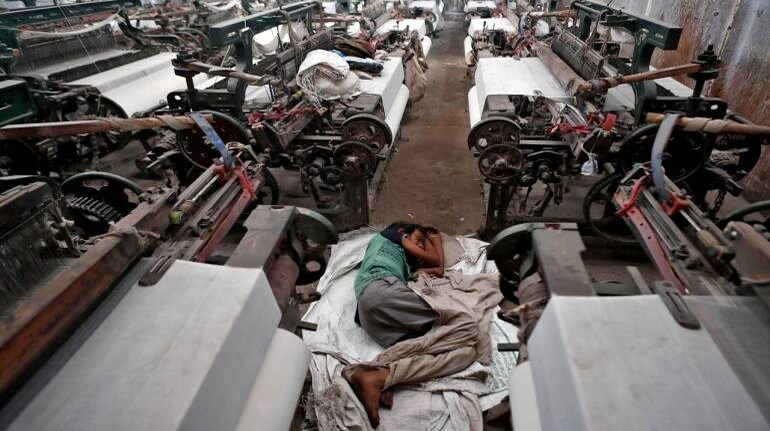
Life has a way of infallibly coming full circle. As an organisation that began existence on the opposite side of the government fence, the Shiv Sena spent half a century beating up migrants to Mumbai, including the well-off Gujaratis, the middle-class South Indians and the poorer working class North Indians.
Now, as leaders of the state government with the future of Maharashtra in their hands, Shiv Sena chief and Chief Minister Uddhav Thackeray is worried about what will happen to Maharashtra’s economy if migrant labourers leave and never come back. Although, unlike Karnataka, the Maharashtra government is not stopping the migrants from leaving, and the CM even decided to pay for their transport from the chief minister’s relief fund, Thackeray's concerns are genuine.
Decades of agitating against migrants has not masked the fact that people from other states were in (mainly) Mumbai because local Maharashtrians were either too lazy or too hoity-toity to take up the jobs the migrants did. With relatively high levels of education, illiteracy is rare among Maharashtrians. This resulted in almost every underprivileged local preferring to work in air conditioned offices as clerks and peons. Working in factories or as taxi drivers or roadside vendors militates against their sense of self-worth. Better education has meant that the local Maharashtrians have managed to take back some of the middle-class jobs that went to South Indians. At the higher levels, barring a couple of industrial houses such as Kirloskars and Garwares and the likes, not many Maharashtrians are enterprising enough.The absence of a trading class is a centuries' old gap in Maharashtrian society. What it has always had is an upper crust Brahminical class who were traditional moneylenders and, as an extension of that, exploitative of other members of society. As a result, Chhatrapati Shivaji Maharaj, the Maratha warrior king, invited neighbouring Gujaratis to set up shop, trade and fill the gap where the then local populace was either incapable of doing or looked down upon.
That tradition continued during the British regime, with upper crust Gujarati and Marwari, as well as Sindhi, Bohra and Khoja Muslims, setting up textile mills and other labour-intense factories.
Much of this work force was from far off states where levels of literacy and education were poorer than Maharashtra's. In recent years, this gap in the work force has been supplemented by farmers from rural Maharashtra who have been pushed to urban centres after failed crops.
When Shiv Sena founder Bal Thackeray raged against North Indians a few decades back, he knew that if he really threw them out of the state, there would be a void in the blue collar jobs, especially among the factories and mills across Mumbai and Maharashtra. Nevertheless, it was a great vote-catching tactic.
Today, Bal Thackeray’s son Uddhav Thackeray knows very well that he will never be able to persuade local Maharashtrians to take up the jobs left behind by migrants from other states. This is creating a problem for the Thackeray-led Maha Vikas Aghadi government — what if the migrants do not return to Mumbai in sufficient numbers?
The Union government’s indecisiveness and lack of vision and clarity on the problems the migrant workers were facing across India during the lockdown has resulted in enormous physical, economic and emotional stress to the migrants, many who have walked hundreds of kilometres in the scorching heat and under the blazing sun to get to their villages. Such has been the hardship that it will not be surprising if many of these migrants choose to not return to the cities and settle for a less-paying job nearer to their homes.
The recent change in labour laws would also mean that industrialists might consider relocating units to areas where laws are relaxed and labour is cheaper. The towns and villages in the Hindi heartland might benefit at the cost of cities such as Mumbai, Nagpur, Pune, etc.
However, in this changing demographics, there could be a catch. The general law and order situation in Maharashtra, Gujarat and the South Indian states is better than some Hindi heartland states. This is also one of the reasons why many choose to migrate from these states to the better-governed states.
The ultimate outcome of the shift in demographics, however, would depend on how well the North Indian states are able to manage their returning population, and if they are able to control their law and order situation in good measure.
In the meantime, expect the economies of all states to suffer as, south of the Vindhyas, they face a shortage of labour, and, in the north, they are lobbed with a surfeit of jobless individuals which could lead to other societal problems. In Maharashtra, it’ll be interesting to see how Chief Minister Thackeray tackles the situation.
Sujata Anandan is a senior journalist and author. Views are personal.
No comments:
Post a Comment